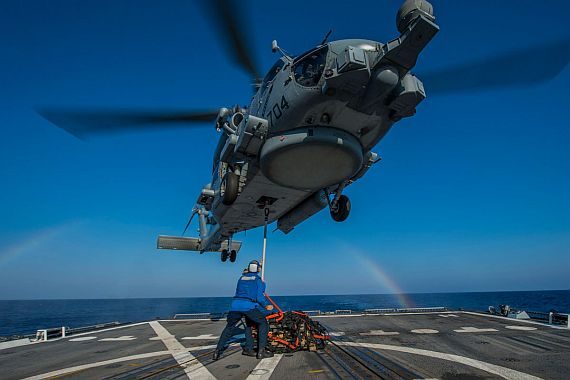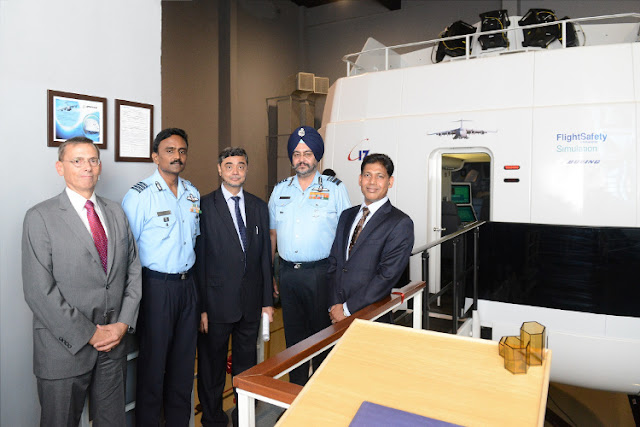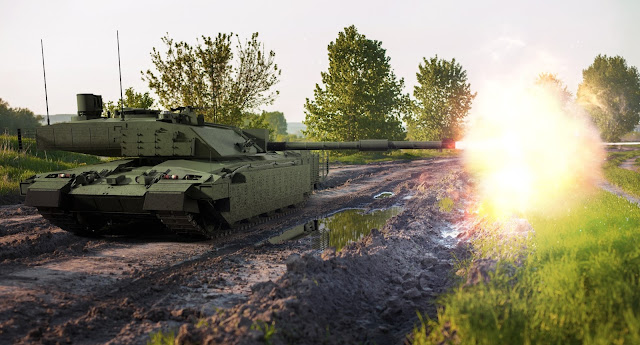This 15 August,
Lockheed Martin conducted a media briefing on the company’s AEGIS Ballistic Missile Defense, PTRIOT Advanced Capability-3 (PAC-3) Missile, and Terminal High Altitude Area Defense (THAAD) programmes before the start of the Space and Missile Defense Symposium (SMDC 2016) in Huntsville, ALUSA. MT US correspondent Marty Kauchak provides extracts from the event.
“
The threat environment, which is driving what most of us do here [at Lockheed Martin] and are doing to help the United States and our friends and allies, has to be categorized as an accelerating threat – in terms of numbers and complexities,”
Doug Graham, vice president of missile systems and advanced programmes, asserted. In one instance, he noted North Korea has conducted nine ballistic missile flight tests in a, “
very limited about of time this year”. And beyond the numbers of tests completed by near- and peer competitors, and rogue nations, Lockheed Martin is also monitoring advanced maneuvering, hypersonic capabilities and other direct technology threats to the US Ballistic Missile Defense System (BMDS).
 |
| "We’re more than 30 Aegis BMD-capable ships (including the USS Barry (DDG-52) above) in the fleet today,” Brad Hicks, Lockheed Martin vice president of business development for integrated warfare systems and sensors, noted. (Photo: US Navy/Mass Communication Specialist 2nd Class Jason Kofonow) |
The Lockheed Martin executive’s “short list” of what the government-industry team needs to effectively respond to a dynamic environment with ballistic missiles and other airborne threats included increased numbers of more capable defence missiles; better sensors; enhanced discrimination capabilities; improved command and control (C2) systems; better data fusion; lower cost per kill; and eventually getting to boost phase engagement. “
Lockheed Martin is proud to be working in most of those venues – and we’re very proud of our track record. Since 1984 we’ve had 100-plus intercepts with systems like THAAD, PAC-3, AEGIS BMD,” he noted.
The US Army and the United Arab Emirates (UAE) are the two current THAAD customers. The programme is rapidly maturing, witnessed by the US Army’s activation earlier this year of its sixth THAAD battery.
Scott Arnold, the vice president of PAC-3 programmes, pointed out the company, “
continues to have other international interest in THAAD and is ongoing in its production for the US Army.”
The major programme milestone is fielding the next generation THAAD – known as THAAD ER (extended range). The ER missile is a two-stage variant with unspecified greater range and velocity, and covering more battle space.
As background, Lockheed Martin has been developing its THAAD-ER concept for about 10 years. Lockheed has invested its own research funding to explore the ER design
In a DoD press briefing this February,
Vice Adm. James Syring, the director of the Missile Defense Agency (MDA), noted THAAD ER remained on track for a 2025 deployment timeframe. Syring further pointed out that’s when, “
ER if it was approved [as a programm] would deliver. It's about a 10-year development programm.”
Returning to the media briefing, Lockheed Martin’s lower-tier interceptor is the capable PAC-3. The PAC-3 is a high velocity interceptor with a hit-to-kill technology underpinning and remains effective against ballistic missiles, aircraft and other breathing targets such as cruise missiles.
PAC-3 has been in production for more than ten years. The missile is operational with the US Army and five current international customers. Arnold added: “
In addition we have four other international customers that are on contract and who we will be delivering their equipment, and they will be fielding PAC-3 in the next several years.”
The MSE (missile system enhancement) is the most recent PAC-3 development. The enhanced missile takes the PAC-3’s hit-to-kill technology and adds a more capable booster and attitude control system. “
This gives us more agility,” Arnold said. “
It allows to double the reach that the weapon system has in terms of altitude or range, thereby extending the defended area and also allowing us to get into the overlapping, defended bands with THAAD.”
Lockheed Martin has delivered 77 of the initial 92 MSEs on contract to the Army. The service declared initial operating capability with MSE this July. “
We also have 250 missiles on backlog,” Arnold revealed. A full rate MSE production decision is expected within the next two years.
“
We are more than 30 AEGIS BMD-capable ships in the fleet today,”
Brad Hicks, the vice president of business development for integrated warfare systems and sensors, noted. The system continues to go through continued upgrades and capacity. In one instance, beginning with USS John Finn (DDG -113), the US Navy is building DDGs with an inherent BMD capability.
In another programme milestone, USS JOHN PAUL JONES (DDG-53), primarily the service’s BMD test-ship, successfully demonstrated AEGIS’ ability to conduct a complicated tracking exercise against a medium range ballistic missile during its endo phase (inside the earth’s atmosphere) of flight during the May 2015 FTX-21 event.
An unheralded AEGIS programme activity, in much of the main defence media, is its expansion in the international market. Indeed, as this article was being prepared for publication the evening of 15 August, Lockheed Martin announced the global AEGIS fleet will expand in Japan and the Republic of Korea (ROK) under a contract to bring integrated air and missile defense capabilities to new destroyers.
The ships will be equipped with AEGIS Baseline 9, the latest evolution of the combat system.
Under this new production hardware contract, Lockheed Martin will expand the AEGIS fleet in Japan: The seventh and eighth AEGIS ships will join Japan’s fleet. Aegis provides four of Japan’s KONGO-class destroyers and two ATAGO-class destroyers with advanced sea, air and undersea threat detection capabilities.
And in the ROK: AEGIS will join the next three KDX-III SEJONG THE GREAT-class destroyers, a multi-purpose destroyer with air and land defence and anti-submarine capabilities. AEGIS is aboard three KDX-III destroyers: RoK SEJONG THE GREAT, RoK YULGOK YI I and RoK SEOAE RYU SUNGRYONG, which are the largest surface warfare ships to carry AEGIS.
The Republic of Korea joined the international AEGIS fleet in 2008, when the navy commissioned the first ship of the class, SEJONG THE GREAT.


































